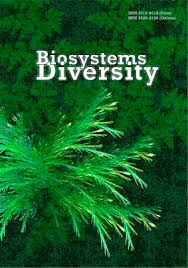Biodiversity of the Regional Landscape Park Samara Plavni within the first large reservoir in Europe Biodiversity of the Regional Landscape Park Samara Plavni within the first large reservoir in Europe
Biodiversity of the Regional Landscape Park Samara Plavni within the first large reservoir in Europe Biodiversity of the Regional Landscape Park Samara Plavni within the first large reservoir in Europe
Author(s): B. A. Baranovski, I. A. Ivanko, V. Y. Gasso, O. L. Ponomarenko, D.V. Dubyna, N. O. Roshchyna, L. A. Karmyzova, J. L. Polevа, V. V. NikolaievaSubject(s): Geography, Regional studies, Energy and Environmental Studies, Sociobiology
Published by: Дніпропетровський національний університет імені Олеся Гончара
Keywords: biodiversity conservation; protected areas; reservoirs of Europe; flora; fauna; zoning of nature reserves;
Summary/Abstract: The creation of reservoirs in river valleys for the accumulation of fresh water has been and remains an important issue around the world. This process has both positive and negative consequences for people and nature. Significant changes in the regime of rivers and their valleys, flooding of meadows and forests, flooding of soils and changes in the composition of flora and fauna of adjacent territories are taking place. In this article, we consider the restoration of the biodiversity of a site of disturbed lands after the creation of one of the first large reservoirs in Europe – the Dnieper (Zaporozhe) on the River Dnieper, which has existed since 1933. The territory of the Samara floodplains was formed on the floodplain of the mouth of the Samara River, as a result of which the territories of various forest, meadow and bog biotopes were flooded. For almost 90 years, new biotopes have been developing, and populations of plant and animal species, especially waterfowl, have been renewed and enriched. In the conditions of climate change and anthropogenic pressure, the existence of this territory has fallen into question. To control the conservation of biodiversity, it is necessary to apply various management methods, one of which is creation of nature reserves. The article presents the results of a complex of scientific studies that were carried out during the zoning of the regional park Samara Plavni to improve the management of the protection of water areas and river banks. We have investigated: hydrological features, species diversity of the flora and coenotic diversity of the vegetation, fauna of aquatic invertebrates, and terrestrial vertebrates. Zoning of the Regional Landscape Park was based on the composition of stable components of ecosystems. When applying the protected regime in different zones, conditions will be created for the preservation of habitats of species, including those protected in Europe: higher plants (Senecio borysthenicus (DC.) Andrz. ex Czern., Tragopogon borystenicus Artemcz.), reptiles (Emys orbicularis (Linnaeus, 1758), Vipera renardi (Christoph, 1861)), birds (Aythya ferina (Linnaeus, 1758), Vanellus vanellus (Linnaeus, 1758), Haematopus ostralegus Linnaeus, 1758, Numenius arquata (Linnaeus, 1758), Alcedo atthis (Linnaeus, 1758), Lanius excubitor (Linnaeus, 1758)), mammals (Lutra lutra (Linnaeus, 1758)). Such changes would increase the implementation of the reproductive potential of all species without exception in the studied ecosystems.
Journal: Biosystems Diversity
- Issue Year: 29/2021
- Issue No: 2
- Page Range: 160-179
- Page Count: 20
- Language: English

